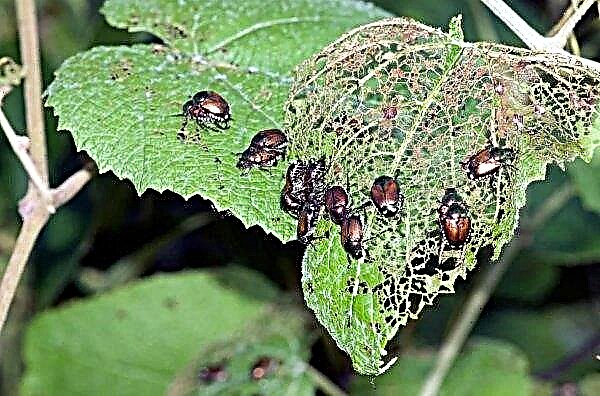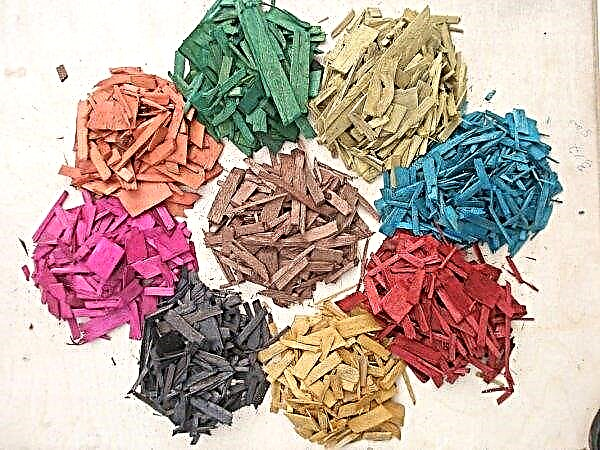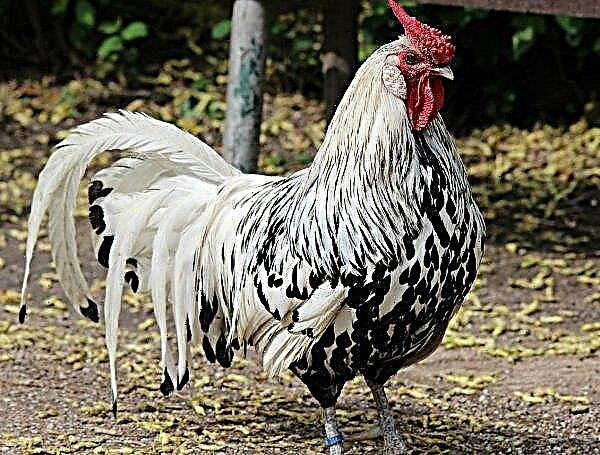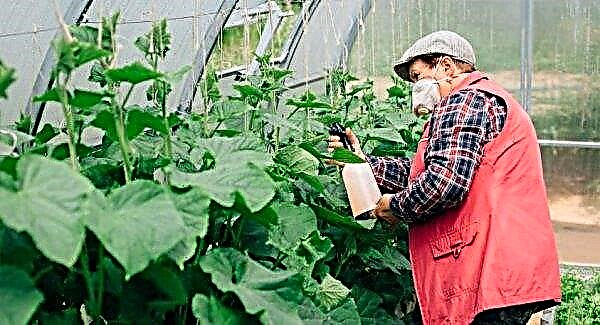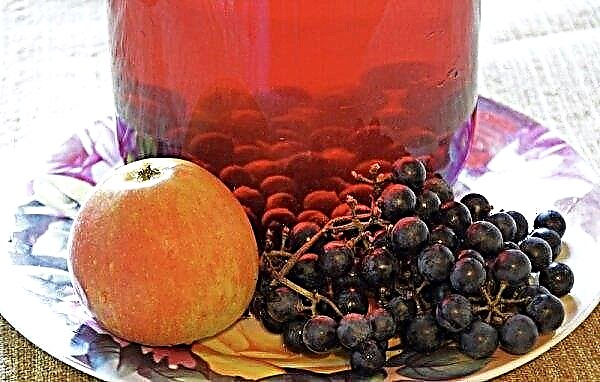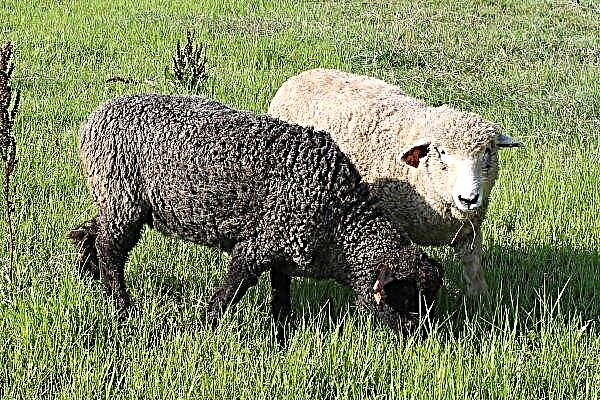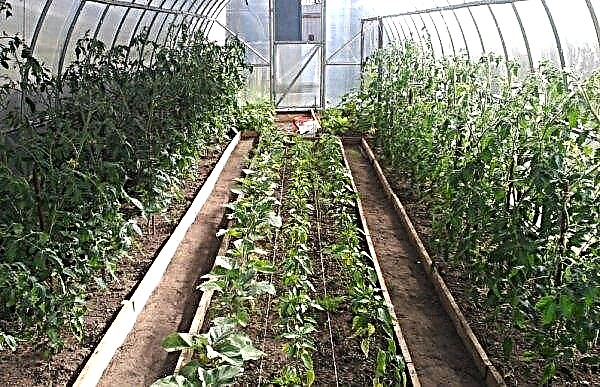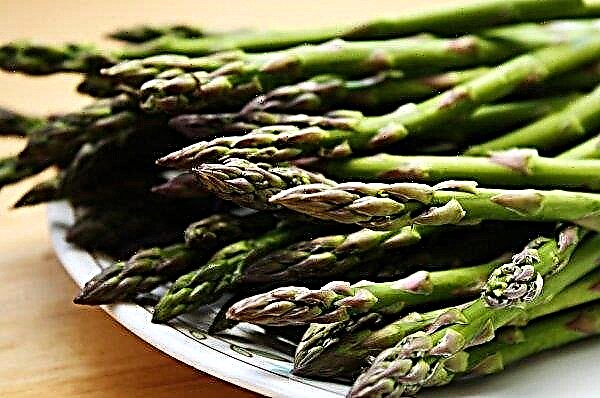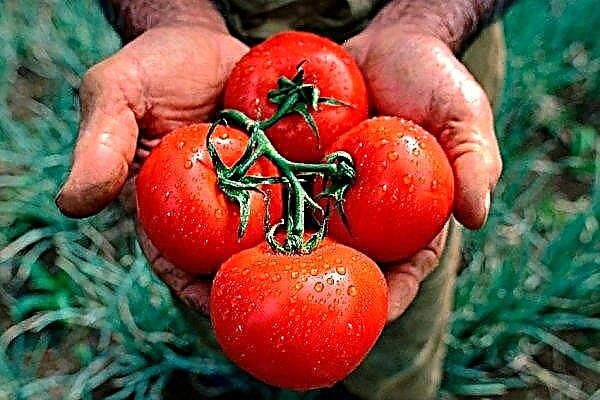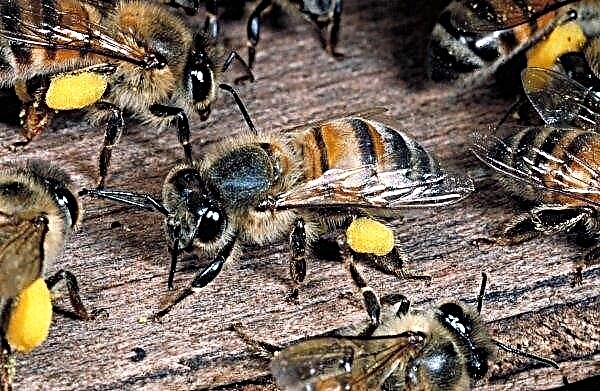Melons, such as watermelon and melon, are low-calorie foods that contain a lot of useful substances and minerals. On the features of the use of such fruits, which is healthier and how many calories they contain, read below.
Description and characteristic
Watermelons and melons have many similar characteristics, but there are also differences. Both cultures belong to the pumpkin family and are annual herbaceous plants with strongly weaving shoots. They also have similar root structure and type of flowering.
Did you know? In China, watermelons are valued not only for their juicy, tasty flesh. In this country, fruit skins are fried or stewed, and then consumed as side dishes.
Watermelon
Plants form one main root, going deep into the ground and providing basic nutrition. Many additional ones located in the upper layers of the soil depart from the main root. This structure allows plants to receive maximum nutrients even in an arid climate. The stalk is long, thin, strongly braided, can reach 3 m. It is covered with many thin villi that actively evaporate moisture.

The leaves are twice cut into lobes, covered with a waxy coating. Some varieties have whole leaf plates, like melons.
Plants form flowers of three types:
- Men's
- Women's
- hermaphroditic.
Melons
The root system has the same structure as the previous culture. The stems are long, lianoid. They can reach a length of 2.5 m. They are covered with coarse hairs. The main stem can form more than 10 additional three orders.

Leaves are arranged alternately. Set on elongated petioles. Leaf plates may be heart-shaped, oval or kidney-shaped. The plant also forms three types of flowers, like watermelon. Pollination occurs due to insects. After pollination, an oval or shortened-oval pubescent ovary is formed, consisting of several carpels.
The fruit is a multi-seeded berry (pumpkin). The shape may be oval or cylindrical. In color - from pale yellow to brown. The peel is smooth or bumpy. The weight of the fetus can vary from 1 to 20 kg. The flesh of different varieties differs in structure and taste. Less juicy than a watermelon.
Calorie content and chemical composition of melon and watermelon
What is sweeter and higher in calories will help to understand the comparative characteristics of the chemical composition of products and their energy value. Calorie melon pulp is 34 kcal.
Per 100 grams of product are:
- protein - 0.6 g;
- fats - 0.3 g;
- carbohydrates - 7.4 g;
- water - 90 g;
- fiber - 0.9 g.

Vitamin and mineral composition of melon pulp:
- calcium;
- magnesium;
- B vitamins;
- vitamin C,
- sodium;
- niacin;
- zinc;
- potassium;
- phosphorus;
- retinol acetate;
- beta carotene;
- selenium and others.
100 g of watermelon pulp contains 27 kcal, which accounts for:
- protein - 0.7 g;
- fats - 0.1;
- carbohydrates - 5.8 g
- fiber - 0.4 g;
- water - 92.8 g.

Vitamin and mineral composition of watermelon pulp:
- beta carotene;
- retinol acetate;
- phosphorus;
- folacin;
- calcium;
- magnesium;
- sodium;
- zinc;
- vitamin C;
- B vitamins;
- niacin;
- vitamin D.
The sweetness of the product does not depend on where it contains more calories, but on the growing conditions and climate of the region. In warmer regions, melons and watermelons will be sweeter. Which is better - melon or watermelon, also does not depend on how many kcal is contained in the product, but on the influence of specific trace elements contained in its composition on the body of a particular individual.Important! For a day, it is permissible to eat no more than 1 kg of pulp of watermelon or melon. Eating them on the same day is not recommended, as the products are rather difficult to digest due to the high fiber content.
Useful properties of melon and watermelon
- The benefits of melon pulp for the human body:
- restoration of water-electrolyte balance;
- improving the functionality of the cardiovascular and endocrine system;
- restoration of normal bowel function;
- improving the central nervous system;
- gentle cleansing of the body of toxins;
- weight loss;
- optimization of the immune system;
- acceleration of cell regeneration of internal organs and dermis;
- providing a feeling of full satiation.

- The benefits of watermelon pulp for the human body:
- protection against aging processes;
- reduces weight;
- improves visual acuity;
- removes excess water from the body due to diuretic properties;
- provides improved absorption of proteins by the walls of the gastrointestinal tract;
- improves the digestion of food.

Harm and contraindications to the use of melon and watermelon
Melons are not useful to everyone.
- Their excessive consumption can lead to such unpleasant consequences as:
- vomiting
- diarrhea;
- exacerbation of gastritis;
- swelling, especially in combination with highly salty foods.
Important! You need to consume melons and watermelons 1-2 hours after the main meal, and also avoid eating on an empty stomach.
- Contraindications to the use of melons:
- children under 6 years old;
- lactation and the last trimester of pregnancy;
- gastrointestinal ulcer;
- allergy to ragweed (watermelon is prohibited, melon is conditional, that is, the use in minimal quantities is acceptable with the agreement of the doctor);
- diabetes;
- enterocolitis;
- pancreatitis
Melons and watermelons are a storehouse of nutrients. Their proper dosed use helps to optimize the functioning of all organ systems and improve the state of the immune system.

